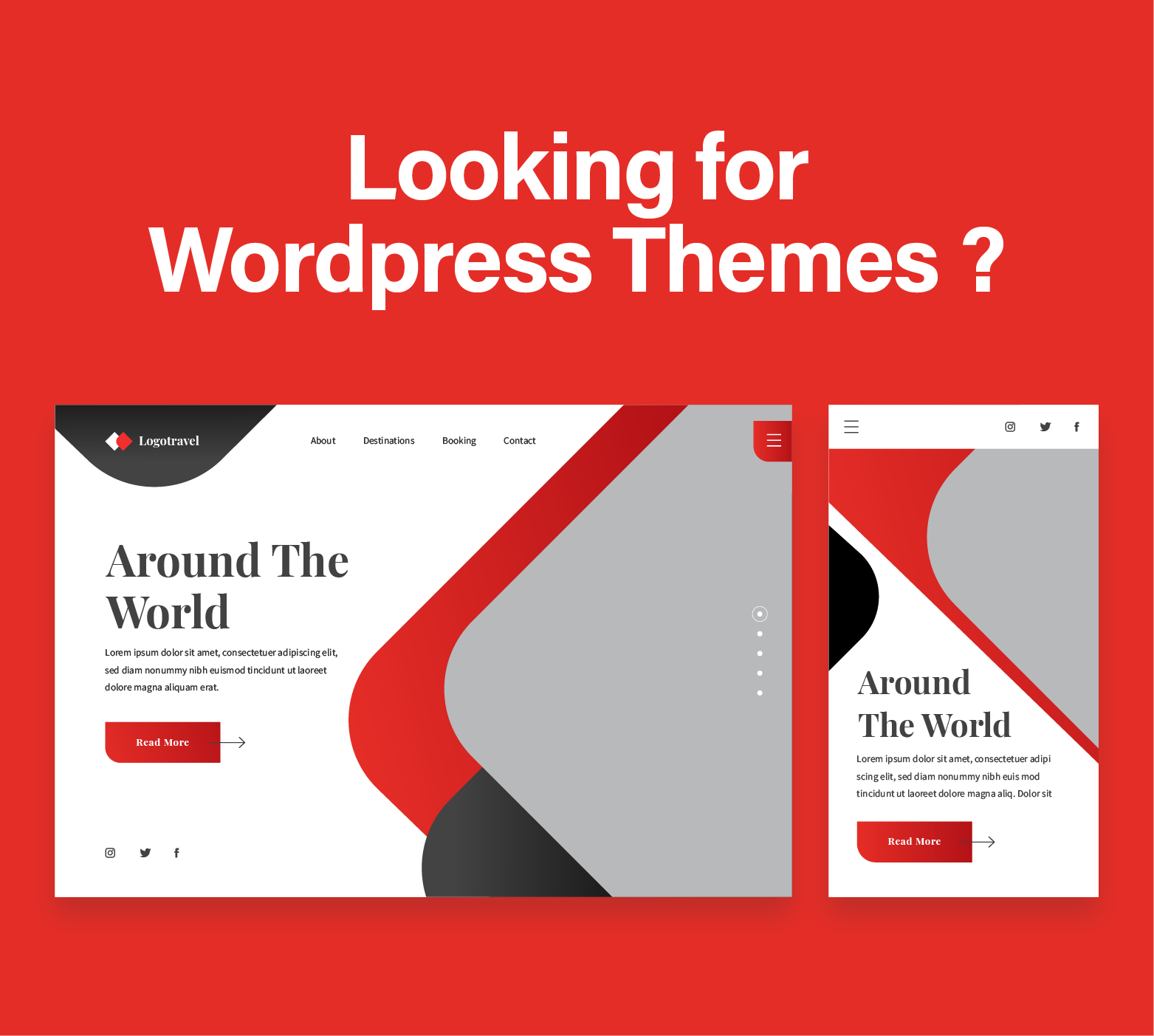When building a website, WordPress and Elementor often come up as essential tools for design and content management. While WordPress serves as a powerful content management system (CMS), Elementor is a popular page builder plugin for WordPress that allows users to customize their site’s design with drag-and-drop ease. Alongside Elementor, WordPress also includes its own editor called Gutenberg, which allows for block-based page building. To understand which combination suits your needs, let’s dive into the key differences between WordPress, Elementor, and Gutenberg.
1. What Is WordPress?
WordPress is a leading CMS used worldwide to create and manage websites, blogs, and online stores. Known for its flexibility, WordPress lets you control the backend of your site, where you can add custom code, install plugins, and use themes. With WordPress, users can choose from thousands of themes to establish a design foundation for their website.
There are two versions of WordPress:
- WordPress.com: A hosted solution with some limits on customization unless you upgrade to paid plans.
- WordPress.org: The open-source version that you install on your own hosting, giving you full control over customization, themes, and plugins.
2. Introducing the Gutenberg Editor
Gutenberg is the built-in block editor for WordPress, replacing the traditional classic editor in 2018. Designed to simplify content creation, Gutenberg allows users to create pages and posts by adding blocks of content, such as text, images, videos, buttons, and galleries. Each block can be styled individually, allowing for a more customized page layout than the classic editor without needing a plugin like Elementor. Gutenberg also supports reusable blocks, allowing users to create custom layouts and use them across multiple pages or posts.
3. What Is Elementor?
Elementor is a third-party page builder plugin designed to enhance WordPress’s design flexibility. It uses a drag-and-drop interface, making it easy to create custom layouts and designs without touching any code. While Gutenberg primarily handles content layouts within WordPress, Elementor focuses on visual design and can give you more control over the look and feel of each page element.
Elementor comes in two versions:
- Elementor Free: Provides basic widgets and editing tools.
- Elementor Pro: Adds advanced widgets, integrations, a theme builder, and more, making it a robust tool for professionals and business sites.
Key Differences Between WordPress, Elementor, and Gutenberg
Purpose and Functionality
WordPress: WordPress itself is the CMS that houses all the content, media, themes, and plugins, functioning as the foundation for your website. You can publish, organize, and manage all your site’s content within WordPress.
Gutenberg: Gutenberg is WordPress’s block-based editor, which allows for structured content layout within WordPress. You can add text, images, and other blocks, and even create basic page layouts without needing additional plugins.
Elementor: Elementor goes beyond Gutenberg’s capabilities by offering more design-focused, drag-and-drop control over your layout. With Elementor, you can design highly customized pages with advanced layouts, animations, and styling options. Unlike Gutenberg, Elementor gives users more control over the entire page’s design rather than just content blocks.
Design Flexibility
WordPress Themes with Gutenberg: Using Gutenberg with a WordPress theme gives you more freedom over content layout within the theme’s constraints. Gutenberg allows you to arrange text, images, and videos in columns or sections, but the overall style is often influenced by the theme itself.
Elementor: Elementor provides more freedom in design with a wide array of widgets and drag-and-drop options. It offers a visual editor that allows users to fully customize the appearance of their site pages, from fonts to spacing to interactive elements. Elementor Pro even allows theme building, which lets users design header, footer, and archive page layouts entirely without relying on theme restrictions.
Ease of Use
Gutenberg: Gutenberg is straightforward and beginner-friendly, especially if you’re familiar with WordPress. Blocks are easy to add and rearrange, making it a great option for simple pages or blog posts. However, Gutenberg lacks the advanced styling and layout control found in Elementor.
Elementor: Elementor’s interface is intuitive, with a live preview that shows changes as you make them. It’s ideal for users who want more advanced design tools without coding knowledge, making it a popular choice for both beginners and experienced designers looking to create custom layouts.
SEO Capabilities
WordPress with Gutenberg: WordPress is SEO-friendly out of the box, and Gutenberg supports SEO plugins like Yoast SEO and Rank Math to help optimize content for search engines. Gutenberg’s lightweight code structure also contributes to fast page loading times, a key factor in SEO.
Elementor: Elementor integrates well with SEO plugins and allows users to customize individual page elements for SEO. However, excessive use of Elementor’s design features—such as animations or numerous widgets—can slow down page load times, potentially impacting SEO. By keeping your designs clean and minimizing resource-heavy elements, you can balance both aesthetics and performance.
Cost
WordPress & Gutenberg: Both WordPress.org and the Gutenberg editor are free to use. However, you may incur costs for hosting, premium themes, or additional plugins, depending on your website’s needs.
Elementor: The free version of Elementor provides basic page-building tools, while Elementor Pro offers advanced features, starting at $49 per year. For users building professional or business websites, Elementor Pro’s extra features often justify the cost, as they can save time and improve design quality.
4. How WordPress, Gutenberg, and Elementor Work Together
One of the strengths of WordPress is that you can use both Gutenberg and Elementor on the same site, leveraging the advantages of each tool. Gutenberg can handle content-heavy sections like blogs or news posts, while Elementor is ideal for designing unique pages, landing pages, or home pages that need more customization. Together, they allow you to manage content seamlessly while creating custom layouts with ease.
For example, you might use WordPress and Gutenberg for managing blog posts and simpler pages while relying on Elementor for designing your homepage or other feature-rich pages.
5. Limitations of Each Tool
WordPress & Gutenberg: While Gutenberg is an excellent tool for content layout, its design capabilities are limited compared to Elementor. Some users find it difficult to achieve a fully custom look without using a page builder like Elementor or learning custom code.
Elementor: Elementor offers extensive design capabilities, but its reliance on a range of features and widgets can slow down the site if overused. Moreover, using Elementor Pro requires an annual subscription, which can be a drawback for smaller projects.
Final Thoughts: Why WordPress with Elementor and Gutenberg Offers the Best of Both Worlds
Ultimately, the combination of WordPress, Gutenberg, and Elementor provides a powerful toolkit for building and managing a website. WordPress delivers a robust CMS to organize content, Gutenberg handles structured content layouts, and Elementor gives you the freedom to design beautiful, custom pages. Whether you’re a beginner looking for ease of use or a professional designer needing advanced control, you can find the right blend of tools.
As a WordPress web design company, we help clients make the most of WordPress, combining Gutenberg and Elementor for sites that are both functional and visually engaging. If you’re ready to elevate your website’s design and functionality, get in touch with us—we specialize in crafting WordPress websites that look great and perform seamlessly.








